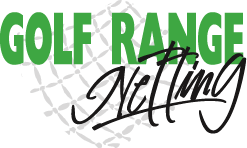
The Benefits of Flight Trajectory Heat Maps for Golf Ranges
Golf ranges are always looking for ways to improve safety and enhance the playing experience for golfers. One of the key challenges they face is determining the appropriate height for golf ball netting poles to prevent errant balls from causing damage or injury. This is where flight trajectory heat maps come into play.
Understanding Flight Trajectory Heat Maps
A flight trajectory heat map is a visual representation of where golf balls land and their flight patterns across a range. This data is collected using advanced sensors and tracking technology that monitors the ball from the moment it’s hit until it lands. The resulting heat map shows the most common trajectories and landing spots, with different colors indicating the frequency of landings in specific areas.
Optimizing Netting Pole Height
Using heat maps, golf range operators can analyze the data to determine how tall the netting poles need to be to provide adequate protection. By understanding the typical flight paths and peak heights of golf balls, they can strategically place taller poles where the risk of balls flying out of the range is higher. This targeted approach ensures that the netting is effective without being unnecessarily high, which can be visually unappealing and more costly.
Cost-Effective Solutions
Flight trajectory heat maps can save golf ranges money in the long run. By providing precise data on ball flight patterns, ranges can avoid the expense of installing poles that are taller than necessary or the potential costs associated with raising net heights later on. This data-driven approach leads to a more cost-effective solution for golf ball netting systems.
Enhanced Safety and Peace of Mind
Safety is paramount for golf ranges, and flight trajectory heat maps offer an extra layer of security. By ensuring that netting poles are of the correct height, golf ranges can protect players, spectators, and surrounding property from stray golf balls. This not only prevents accidents but also provides peace of mind for everyone involved.
Conclusion
Flight trajectory heat maps are a valuable asset for golf ranges, providing essential data that informs the height of golf ball netting poles. By leveraging this technology, golf ranges can enhance safety, reduce costs, and ensure a better experience for golfers.
Check out GRN’s project map https://www.golfrangenetting.com/interactive-project-map/
